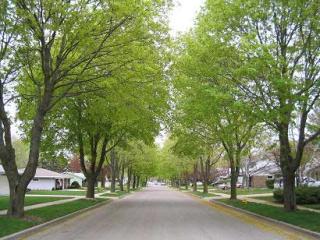Resources

Trees of Distinction: A Walking Tour of Cedarburg
Cedarburg prides itself on having a wide diversity of trees and in doing their best to keep our urban forest in the best condition possible. On this 1 1/4 mile walking tour, which begins and ends at City Hall, you will travel past many of the buildings that make Cedarburg a unique and historic town.
Though many of the buildings in the downtown area are over 150 years old, some of the trees on this tour predate settlement of the city. Others are younger and less often seen in the landscape, but excellent trees nonetheless and would make worthwhile additions to your personal landscape. This tour will introduce you to 15 of the many tree species found within the borders of Cedarburg. Learn More...
Invasive Plants & Insects
An invasive species is a plant or animal that is not native to a specific location (an introduced species) and has a tendency to spread to a degree that causes damage to the environment, human economy or human health. Following are invasive species topping the list.
- Garlic Mustard: In its first year, this biennial plant can be identified by its clusters of 3-8 rounded to kidney-shaped leaves with scalloped edges. Second year plants produce 1/4″ white, 4 pedal flowers which bloom in April/May. Seed capsules produce over 100 seeds per plant.Pulling, bagging, and sending to a landfill is recommended. Never compost nor leave plants in piles. Garlic mustard seeds can ripen after plants are uprooted.
- Buckthorn: Common Buckthorn starts as a small understory shrub and can grow to a 20-25′ tall tree. It leafs out very early and retains leaves late into the growing season. Left alone, it creates dense shade, eliminating regeneration of tree seedlings and understory species. It produces chemical compounds that inhibit growth of other vegetation.Buckthorn is a starvation food for birds. They eat buckthorn berries only when food sources are low, especially in late winter. Buckthorn berries cause diarrhea and weakens birds as well as disperses seeds.
- Emerald Ash Bore: Emerald Ash Borer (Agrilus planipennis) is an invasive, wood boring beetle. It kills ash trees (Fraxinus spp) by eating the tissues under the bark. This metallic green beetle is native to East Asia. It was brought to the United States accidentally, in the wood of shipping crates from China.

